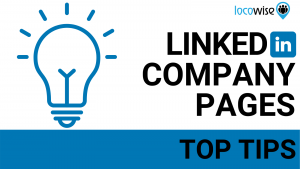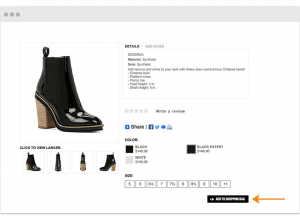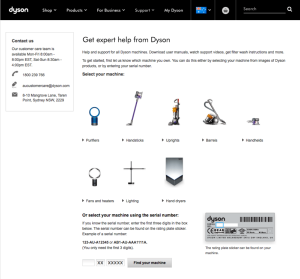Gain a competitive edge by ensuring your marketing technology stack is always optimized for operational excellence.

Marketing technology is the backbone of marketing operations, enabling organizations to efficiently and effectively manage campaigns, analyze data and engage customers. However, as the martech landscape evolves, your stack must remain optimized for maximum efficiency and effectiveness. Here is why and how to do it.
What is martech optimization?
Martech optimization is a systematic and ongoing process of evaluating, adjusting and enhancing the components of a company’s marketing technology stack. This includes tools and solutions integral to MOps, such as data management platforms, analytics tools, customer relationship management (CRM) systems and content delivery platforms.
The primary objective of martech optimization is to ensure that each component functions optimally and works cohesively with other technologies to improve overall marketing performance.
Why is martech optimization important?
In today’s digital-first era, marketing technologies form the backbone of nearly all marketing operations. An optimized martech stack is essential for several reasons:
- Efficiency: Streamlined tools and processes allow for more efficient campaign management and execution.
- Data utilization: Improved data collection and analytics lead to better customer insights and decision-making.
- Customer experience: Enhanced tools contribute to more personalized and effective customer engagement.
- Cost management: Eliminating redundant tools and better allocation of resources lead to reduced costs and higher ROI.
Failing to maintain an optimized stack can lead companies to lose competitive edge due to outdated technologies, inefficient processes and strategies that do not align with market demands or customer expectations.
Approaching a martech optimization project
1. Mindset and preparation
Successful optimization starts with the right mindset. Foster a culture of flexibility, innovation and continuous improvement. Be willing to assess your current tools and processes and be open to making necessary changes to drive marketing success.
2. Conducting an audit
The optimization process begins with a comprehensive audit of the existing martech stack:
- Inventory assessment: List and categorize all current martech tools and platforms.
- Performance evaluation: Measure how effectively each tool contributes to marketing goals.
- Integration check: Assess the interoperability of tools to ensure seamless data flow and functionality.
- Cost analysis: Analyze the cost-effectiveness of each tool, identifying financial waste and opportunities for cost savings.
3. Sample templates and goals
To facilitate the audit process, it’s helpful to use structured templates. Here’s a detailed example template with sample data:
| Tool | Purpose | Performance | Integration Level | Cost | Notes |
| CRM | Customer management | High | Fully integrated | $ 500/mo | Critical for lead tracking and management |
| Email Marketing | Campaign execution | Moderate | Partially integrated | $ 300/mo | Review alternatives for better integration and functionality |
| Analytics | Data analysis | High | Fully integrated | $ 200/mo | Key for measuring ROI and customer engagement |
Goals for optimization could include reducing operational costs by 10%, improving campaign response rates by 15%, or achieving seamless integration across the stack.
Developing a strategic plan for martech optimization
After completing the martech stack audit, developing a strategic plan becomes essential to address the findings and chart a clear path forward. This plan should serve as a blueprint for implementing improvements that can significantly enhance the effectiveness and efficiency of your marketing operations.
Prioritizing actions
The first step in the strategic plan is to prioritize actions based on their potential impact on the organization’s performance. It involves:
- Evaluating the urgency: Identify which problems need immediate attention to prevent disruption in marketing activities.
- Assessing impact: Focus on optimizations that promise the most enhanced customer engagement, improved data analytics or cost savings.
- Considering feasibility: Some initiatives, while beneficial, may require more resources or time than currently available. Prioritize actions that are achievable within the existing constraints.
Setting timelines
Clear, realistic timelines are critical for the successful implementation of each optimization. This phase should involve:
- Creating milestones: Break down each initiative into manageable tasks with specific milestones to monitor progress.
- Establishing deadlines: Set specific deadlines for each milestone, ensuring enough time to handle unexpected challenges while maintaining momentum.
- Adjusting as needed: Be prepared to adjust timelines based on project progress and external factors such as technology changes or market developments.
Allocating resources
Determining the resources required for each initiative is crucial. This involves:
- Budget allocation: Assign a specific budget to each task, considering direct costs like new software purchases and indirect costs such as training and downtime during implementation.
- Manpower planning: Identify the number of personnel required and their roles. Ensure that teams have the right skills or receive necessary training to handle new technologies or processes.
- Resource scheduling: Schedule resource usage to avoid conflicts and ensure critical resources are available.
Factors for the final report and calls to action
The project’s final report should be comprehensive and actionable, designed to communicate the audit findings, recommended actions and projected outcomes clearly and persuasively.
Summarizing findings
This section should highlight the key insights and issues uncovered during the audit. It should provide a clear understanding of:
- Current gaps: Detail the existing gaps in technology and processes that are hindering performance.
- Underperforming areas: Identify areas where performance does not meet expectations or industry standards.
- Risk factors: Discuss any risks identified during the audit, including technological obsolescence, data security issues, or integration flaws.
Detailing recommendations
Recommendations should be clearly outlined, specifying the improvements needed. This section should include:
- Tool upgrades: Recommend specific technologies for upgrade or replacement and explain the rationale.
- Process changes: Suggest modifications in processes to enhance efficiency, such as automating repetitive tasks or redefining workflow for better data flow.
- New integrations: Identify opportunities to integrate new tools that can provide enhanced data analytics or customer insights.
Projecting outcomes
Estimate the potential outcomes from implementing these recommendations, such as:
- Enhanced performance: Quantify expected improvements in marketing campaigns and operational efficiency.
- ROI improvement: Project the return on investment from each initiative, based on cost savings and revenue growth.
- Customer experience enhancements: Forecast how changes will improve customer engagement and satisfaction.
Implementation timeline
Provide a detailed schedule for all optimization phases, including start and end dates for each initiative, to help stakeholders visualize the project timeline and set expectations accordingly.
Implementing changes
With the strategic plan and final report in, the next step is implementing the changes based on the audit’s findings.
Upgrading technologies
- Selecting vendors: Choose vendors that offer scalable solutions and support.
- Integration testing: Conduct thorough testing to ensure new technologies integrate smoothly with the existing stack.
Enhancing integrations
- Data synchronization: Focus on synchronizing data across platforms to ensure accuracy and accessibility.
- API management: Improve API strategies for better connectivity between different systems.
Retraining staff
- Skill assessments: Evaluate current team skills and identify gaps.
- Customized training programs: Develop training programs tailored to the new technologies and processes.
Revising strategies
- Aligning with objectives: Ensure the revised strategies align with broader business objectives.
- Feedback loops: Establish mechanisms for ongoing feedback to continuously refine the strategies based on real-world performance and outcomes.
Monitoring and ongoing optimization
Martech optimization is not a one-time activity but an ongoing process. Continuous monitoring and regular updates are essential to adapt to new marketing challenges and technological advancements. This includes:
- Regular reviews: Conduct periodic reviews to assess the martech stack and make adjustments as necessary.
- Keeping abreast of trends: Stay informed about the latest in martech to ensure the stack remains current and competitive.
- Feedback mechanisms: Implement systems for gathering feedback from users of the martech stack to identify areas for further improvement.
Unlocking martech mastery
Martech optimization is crucial for maintaining competitiveness in the digital marketplace. Regularly auditing, adjusting and enhancing the martech stack ensures it remains agile, responsive and aligned with your marketing goals.
The success of martech optimization relies on a proactive approach, comprehensive planning and the willingness to embrace change for continuous improvement.
The post Unlock marketing efficiency: The essential guide to martech stack optimization appeared first on MarTech.
(10)
Report Post






